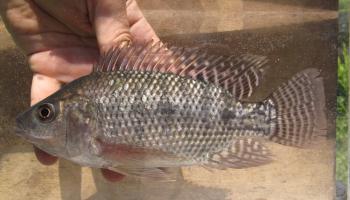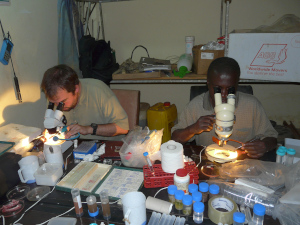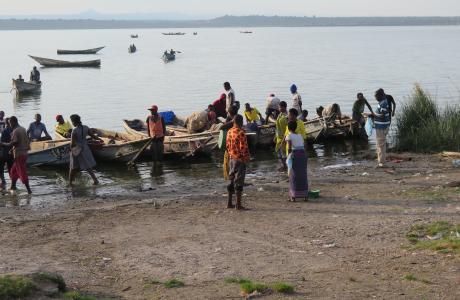Museum collections allow breakthroughs in parasitology
A team of Belgian, Congolese and French researchers revealed that the introduction of Nile Tilapia into the Congo Basin was accompanied by the introduction of eight parasite species. Of these eight species, three are now infecting native fish species. The team was able to do this by comparing fish specimens from the collections of the Royal Museum for Central Africa with recent specimens. Published in the journal Biological Invasions, their study illustrates the importance of natural history collections as windows on past environments.

Tilapia: fish with important economic and environmental stakes
The Congo Basin is home to the greatest diversity of fish in Africa. Approximately 1000 species live in this region, 65% of which are endemic.
Fish are also of great economic importance due to fisheries and aquaculture, which provide at least 30% of the animal protein intake of the region's population.
Tilapia are a major part of this. Between 2000 and 2015, tilapia production increased fivefold to more than 5 million tonnes per year and is now practised in 140 countries.
In sub-Saharan Africa, Nile Tilapia (Oreochromis niloticus) and its hybrids account for more than 75% of tilapia production. This species adapts easily to new environments, which explains its popularity in aquaculture.

But its adaptability also makes it a highly invasive species. For example, in Lake Victoria, the native tilapia species, Oreochromis esculentus, was decimated in just 30 years following the introduction of the Nile Tilapia.
Fish travel with their parasites
One of the consequences of introducing a species is that it often does not arrive alone. A fish introduced into a new habitat brings its parasites with it.
In some cases, these parasites can infect native fish. The opposite can also happen: parasites of native fish may jump to the introduced species.
A team of Belgian, Congolese and French researchers investigated these 'species jumps' in different monogenean flatworms, microscopic parasitic worms that live in the gills of fish.
However, relatively few studies have been carried out on these parasites in sub-Saharan Africa and the first introductions of tilapia in Congo date back to the late 1940s.
So how do we know if the flatworm parasites found on fish in a certain region are native, or if they were introduced with the tilapia?
Museum collections: unique research tools
Museum natural history collections house specimens that are sometimes more than 100 years old, providing a testimony of past environments.
"The collections of the Royal Museum for Central Africa house many tilapia specimens that were collected before the first introductions for fishing or aquaculture," explains Michiel Jorissen, a PhD student at the Hasselt University and the Royal Museum for Central Africa who conducted the study. "When you look closely at the gills of these fish, the parasites that lived there at the time are still there."

"By comparing the parasites found on old fish specimens with those found on recent specimens, we were able to trace the history of parasite invasions."
Several parasite jumps occurred in the Congo Basin
Researchers have shown that the Nile Tilapia has introduced eight species of flatworm parasites into the Congo Basin. Of these eight species, three are now infecting native fish species.
The opposite has occurred in the Redbreast Tilapia (Coptodon rendalli), a species introduced into the Bas-Congo. The parasites of this fish have been completely replaced by species that infect native tilapia.
Parasites, an often unknown factor in biological invasions
"We know that co-introduction and transmission of parasites to other species can be without serious consequences, just as they can be disastrous," says Michiel Jorissen.
"The current crisis with COVID-19 is a clear example of this, but there are many others. The introduction of Gyrodactylus salaris for example, a parasitic worm that is closely related to the worms we study, has decimated the salmon population in Scandinavia."
"In Africa, parasites are little studied when it comes to biological invasions. Our study aims to change this, and to draw attention to the importance of museum collections in this current issue."
M. W. P. Jorissen, T. Huyse, A. Pariselle, S. Wamuini Lunkayilakio, F. Muterezi Bukinga, A. Chocha Manda, G. Kapepula Kasembele, E. J. Vreven, J. Snoeks, E. Decru, T. Artois, M.P.M. Vanhove (2020) Historical museum collections help detect parasite species jumps after tilapia introductions in the Congo Basin, Biological Invasions
DOI : 10.1007/s10530-020-02288-4


